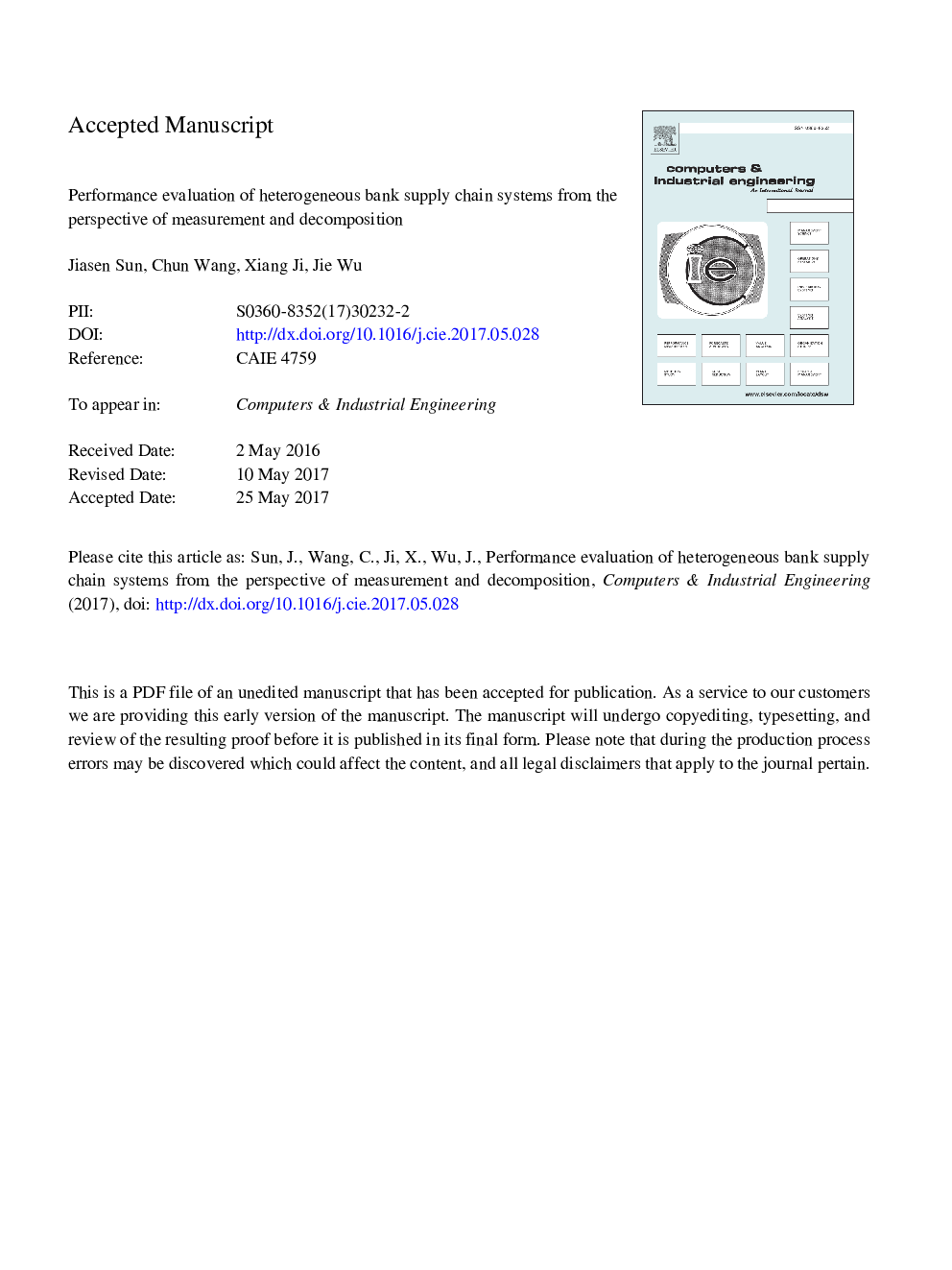| Article ID | Journal | Published Year | Pages | File Type |
|---|---|---|---|---|
| 7541878 | Computers & Industrial Engineering | 2017 | 25 Pages |
Abstract
Bank supply chain performance evaluation problems are inherently complex given their linked internal activities. Network-DEA models using radial measures of efficiency have been used to address supply chain performance evaluation problems. However, such models applied to bank supply chains are found to have potentially three disadvantages. First, they do not consider bank supply chains' undesirable outputs. Second, existing studies frequently omit the impact of the heterogeneity of production technologies across different bank supply chain systems. Third, Network-DEA models fail to deconstruct the latent improvement sources of performance, thus unable to support adequately decision makers' policy targets. To address these issues, this paper proposes two alternative network-DEA models which incorporate the directional distance function (DDF) and meta-frontier methods for evaluating bank supply chain system performance. The main characteristic of the proposed models is that they take intrinsic technology-level differences between different supply chains into account. To measure the technology levels of different types of bank supply chain systems, this paper proposes a technology gap ratio (TGR) index. A case study of 16 Chinese commercial banks from 2007 to 2014 is presented to exhibit the effectiveness of the proposed network-DEA models and demonstrate the applicability of the proposed TGR index to the supply chain performance evaluation problem in the bank industry. Empirical results show that the deposit/loan efficiency of Chinese banks is still relatively low. The managerial and technological factors cause Chinese banks' deposit/loan inefficiency. Specific suggestions are also proposed for each type of banks.
Keywords
Related Topics
Physical Sciences and Engineering
Engineering
Industrial and Manufacturing Engineering
Authors
Jiasen Sun, Chun Wang, Xiang Ji, Jie Wu,
